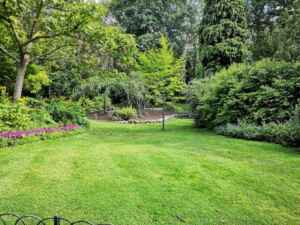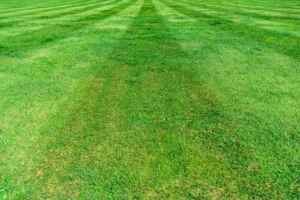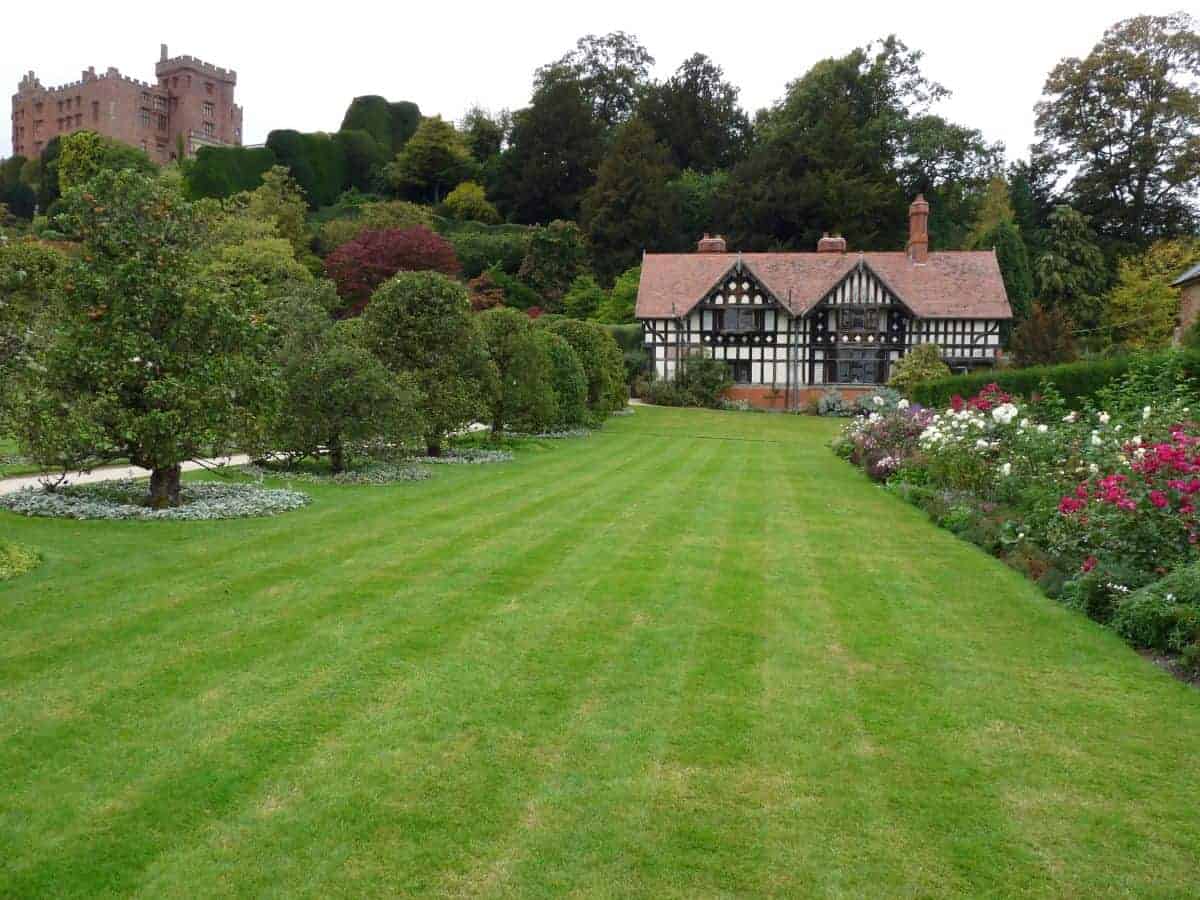How Many Bags of Fertilizer Do I need To Fertilize My Yard?
Fertilizing a lawn has become an American tradition. In the 1960s, most lawns were fertilized with one to two pounds of fertilizer per 1k square feet of grass area – about 3lbs per 1000 sq ft – once or twice per year depending on soil fertility. In the last decade or so, homeowners have been instructed to fertilize grass more than once per year, sometimes as often as 5 to 6 times per year. However, it is now becoming recognized that too much fertilizer can do more harm than good.
The right balance of fertilizer will help encourage strong root growth, which will in turn result in healthy grass. But applying too much fertilizer won’t necessarily boost your lawn’s health. Some telltale signs can determine how much fertilizer your lawn needs. The best lawn fertilizer may not be the cheapest!
Fertilizer for your lawn can be expensive, so you want to know how many bags of fertilizer for your yard is needed. After some deeper research because I do not own a yard, I would love to share 7 tips I found to determine how many bags of fertilizer for your yard is needed:
 Decide on single or blended fertilizers
Decide on single or blended fertilizers
If you’re looking for quick results, go with the fast-acting single fertilizers. If you want a stronger, more lush lawn, go with the blended fertilizers. Commercial fertilizers are listed by analysis on the package label. The analysis shows the percentage of nitrogen (N), phosphorus (P), and potassium (K). About 34 percent is generally considered to be low-nitrogen; 16-0-0 is one example of a low-nitrogen fertilizer.
Decide on organic or synthetic fertilizer
Organic fertilizers are safer to use in your yard and have less chance of burning your grass. They also will not leave behind any harsh chemicals that could harm children and pets. The downside is they take longer to work and will not last as long in your yard. Organic fertilizers, such as blood meal, cottonseed meal, and composted manure are lower in nitrogen than synthetic fertilizers. Even though these organic materials contain high levels of phosphorus, the amount is low enough to prevent burning or injury to plants. Organic fertilizers can take several weeks to become available to plants. Chemical fertilizers, on the other hand, may be more readily available to plants within a few days of application. However, slow-release organic fertilizers can last up to six months or more in the soil! They do not wash away as easily as chemical fertilizers and they don’t leach nutrients from the root zone. Remember that the best fertilizers for grass are organic fertilizers which provide a slow release of low levels of nutrients, rather than quick-acting chemical salts.
Decide on slow or fast-release fertilizers
Slow-release fertilizers, such as blended products, are produced with nutrients that are released more slowly into the soil. Slow-release fertilizers are designed for extended feeding periods of 3-4 months. They can be costly, but they last a long time. Quick-release fertilizers, such as single nutrients, decompose more quickly and will provide benefits for 1 to 3 months. Make sure that your application equipment is calibrated correctly to apply the correct material for the area being treated and the spreader is adjusted to spread the correct rate.
Decide on water-soluble or liquid fertilizer
Water-soluble fertilizer is mixed with water and applied through the irrigation system. Liquid fertilizers are sprayed directly onto grass blades.
Calculate the coverage for your yard space
You’ll need to determine the square footage of your lawn. Measure your lawn in feet, then multiply by the width and length of your yard. Multiply this number by 0.60 to determine the amount of fertilizer needed per 1,000 sq ft. For example, a 10’x10′ square would need 6 bags of fertilizer. According to the University of Missouri Extension, a normal dose of fertilizer for a lawn is 2-3lbs of fertilizer per 1000 sqft. Lawns that need fertilizing twice a year will have about 6-9lbs of fertilizer for every 1000 square feet. It means that if you have more than this recommended amount, it is time to cut back on the number of times you apply fertilizer during the growing season.
Most bags will display an estimated amount of square footage the bag will cover. Compare this to your yard’s square footage to determine how many bags are required for complete coverage. A fertilizer listed as 2-3-1 contains two pounds of nitrogen per thousand square feet, three pounds of phosphorus per thousand square feet, and one pound of potash (potassium) per thousand square feet.
 Lawn Thatch is at Its Maximum
Lawn Thatch is at Its Maximum
Thatch – the layer of dead grass stems and roots that accumulate on top of healthy grass – takes about two to three years to form. To determine if you need to fertilize, simply “fluff up” the thatch covering your lawn with a hand rake or rotary mower. If there is at least an inch of brown material, this means that your lawn is nutrient sufficient and it needs fertilizer.
Topdressing refers to the practice of putting a thin layer of compost or fertilizer on top of grass just before mowing. As you weed wack into the thatch, it will mix with the compost or fertilizer and provide a nutrient-rich bed for seed germination. If you didn’t fertilize in spring, it is best to do so now because the nutrients will be used up as grass grows through warm months.
Lawn Grass is a Dark Green Color
Healthy grass can be a dark green color mainly because of nitrogen, an essential nutrient that helps with leaf coloration. So if your lawn doesn’t have enough of this nutrient, it will appear more dull and yellow. Healthy grass should be a dark green color with a dense, even growth pattern. If it isn’t, fertilize your lawn as soon as possible to encourage healthier growth. Brown spots in the grass could be caused by several factors, including weather conditions and dog urine patches. However, these signs can also indicate that your lawn is nutrient deficient and needs fertilizing right away. Remember that green grass has to grow from healthy root systems which depend on soil nutrients. If you can’t determine what has caused the brown spots, it is best to fertilize the lawn and provide the missing nutrients.
Too Much Fertilizer?
If you’re like most Americans, you’ve probably tried (unsuccessfully) to keep up with the Joneses and their perfect lawn. And like many of us, you may have done whatever was necessary to achieve your goal. In other words, you may have overused fertilizer on your lawn. But don’t worry—this condition is easily cured by cutting the amount of nitrogen in half for the next two or three years.
“Fertilizer helps grass fill in bare spots and maintain a deep green color,” says Jim King, director of horticulture at the Atlanta Botanical Garden. “But if you overdo it, you’ll end up with brittle, dead grass.”
A lot of people put down too much fertilizer because they’re under the impression that more is better. Don’t be one of them, advises Mike McGroarty, author of “Fertilizer for Free.” People think they need to fertilize their lawn once a month,” says McGroarty, who’s also an environmental horticulture specialist and winner of the 1991 President’s Award from the Garden Writers Association. But do you want your grass to be as thick as carpet?” The average lawn is serviced by a 200-square foot area,” says King. “If you fertilize to the point that it’s as wide as your street, you could be killing off grass.”
Not Enough Fertilizer
- One way to determine whether your lawn needs fertilizer is to layer the bed with newspapers. The next day, “if you have a foot-high stack of papers left, you can’t fertilize,” says McGroarty. If there aren’t many layers, spread a half-pound of fertilizer per 1,000 square feet. The amount should be 50 percent less for sandy soils and 25 percent less for heavier soils that retain nutrients well.
- Fertilize in the fall, before the grass goes dormant. If you do it too soon, King says, “you’ll have nice green grass but no roots.” And after a lush spring and summer? You need to let your lawn rest and recover from all that sugary love. As a rule of thumb, says King, it’s best to fertilize in the fall rather than the spring because “you’re less likely to burn your grass.”
- Your lawn will turn a pale yellow and—if there isn’t enough iron in your soil—it might even become orange. If the grass becomes discolored, fertilize only every other year. But if you want to keep up with the Joneses, there’s nothing wrong with that.
It is also important to remember the timing, location, and quantity when you are trying to achieve a green, balanced lawn. I would like to share some additional warnings I found in my research.
 Warnings
Warnings
- Do not apply fertilizer within 30 days of planting new sod or seeding grass. The seeds need time to germinate before they are exposed to high levels of nitrogen fertilizer. When applying low-nitrogen fertilizers, water the grass thoroughly after the application. Drought stress is magnified by excess nitrogen in the soil.
- Do not apply fertilizer during extreme temperature conditions (for example if it is very hot or cold).
- Do not fertilize before mowing the lawn. Fertilizers containing high levels of nitrogen will be more effective when they are combined with shallow incorporation by mowing.
- If there is a high risk of injuring trees, such as in an urban setting, use a fertilizer with low nitrogen and high potassium levels on your lawn.
- Do not fertilize when rainfall will leach nutrients from the root zone or during extended dry periods. Wait until conditions improve before applying fertilizer.

